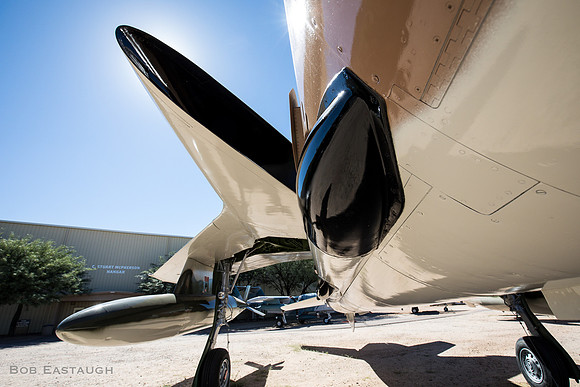Peacemaker; Tucson, October, 2016
Airplanes are among the most fascinating modern devices, partly because of their transporting qualities (in both the physical and inspirational sense), and partly because of their aesthetics. There is a saying in aviation that if it looks right, it will fly right. Airplane aesthetics are the product of aerodynamics and function, but you always suspect there is, in some back room, some designer who has made conscious choices that made some airplanes superstars (think Spitfire, P-51 Mustang, F4U Corsair, and F-4 Phantom). But aside from the superstars, they all seem above average.
So, a visit to the Pima Air and Space Museum near Tucson was a chance to again relish the lines and shapes of modern airplanes. Here are some photos that narrowly frame some of the design elements that define some iconic aircraft.


"Peacemaker" is the name of the B-36. As a name, it is both self-serving and and an exercise in wishful-thinking. Yet it is also potentially valid. The B-36 was the monster bomber that bridged the gap between WWII state-of-the-art (the B-29) and coming-but-unproven (the B-52). The B-36 buried six huge piston engines in the wings to power pusher propellers (think 1903 Wright brothers), and it also had four jet engines to boost attack speeds in hopes (luckily never tested) it would help these giants avoid Soviet interceptors. Designed to carry the huge bombs of the day, it was fortunately, for society and the aircrews, never used in combat. The air inlets for the buried engines are metallic art. They look, disconcertingly, like something that might have been part of the alien ships in the 1950s sci-fi hit, War of the Worlds.


The complex curves of B-52 engine pods are modern design works of art. Striking in glossy camouflage paint from the Vietnam era, this engine nacelle is unmistakably from an early B-52. The Jaguar XK-120 might have been a conceptual design cousin.


Paint is part of the attraction. These graphics decorate a Grumman F9F Cougar.


And these graphics are absolutely diagnostic. This F4 Phantom flew with the Thunderbird demonstration team. (The whole concept of having the Thunderbirds fly giant, loud, fast, heavy Phantoms brings a smile.)


Some features are iconic, such as the triple tails of Constellations and Super-Constellations.


And the reversed intake inlets of the F-105 Thunderchief are both unique to the type and graphically interesting.
Comments


After a lifetime of mainly expressing myself with words, my postings here will mainly rely on images. They will speak for themselves to some extent, but I'll usually add a few comments of explanation. I've taken photographs for decades, since the 1950's, inspired in part by my father's photographic skill. Four years of photo assignments and quality darkroom time eventually gave way to decades of casual and family picture-taking. I re-immersed myself when I left film and turned to digital.